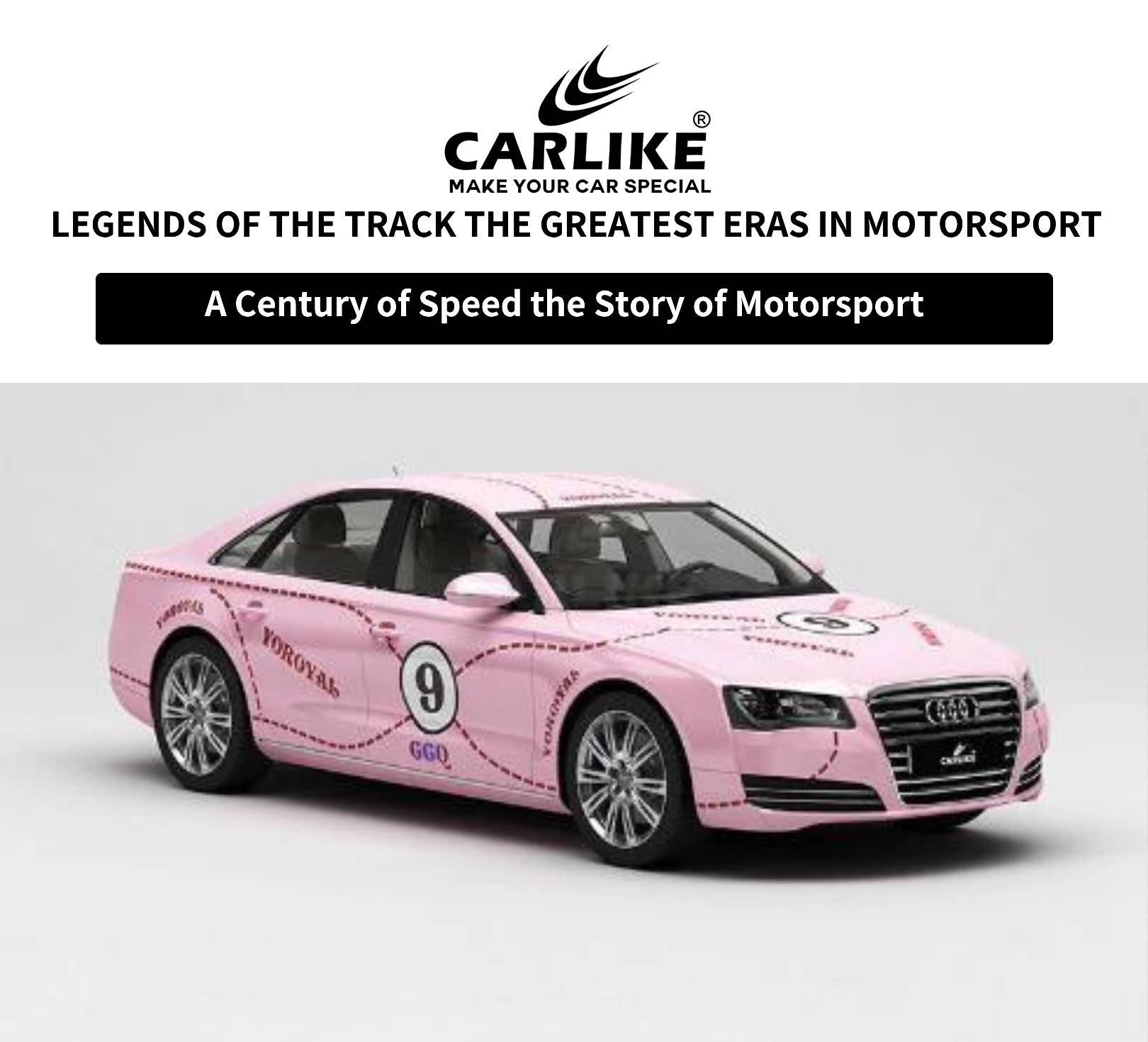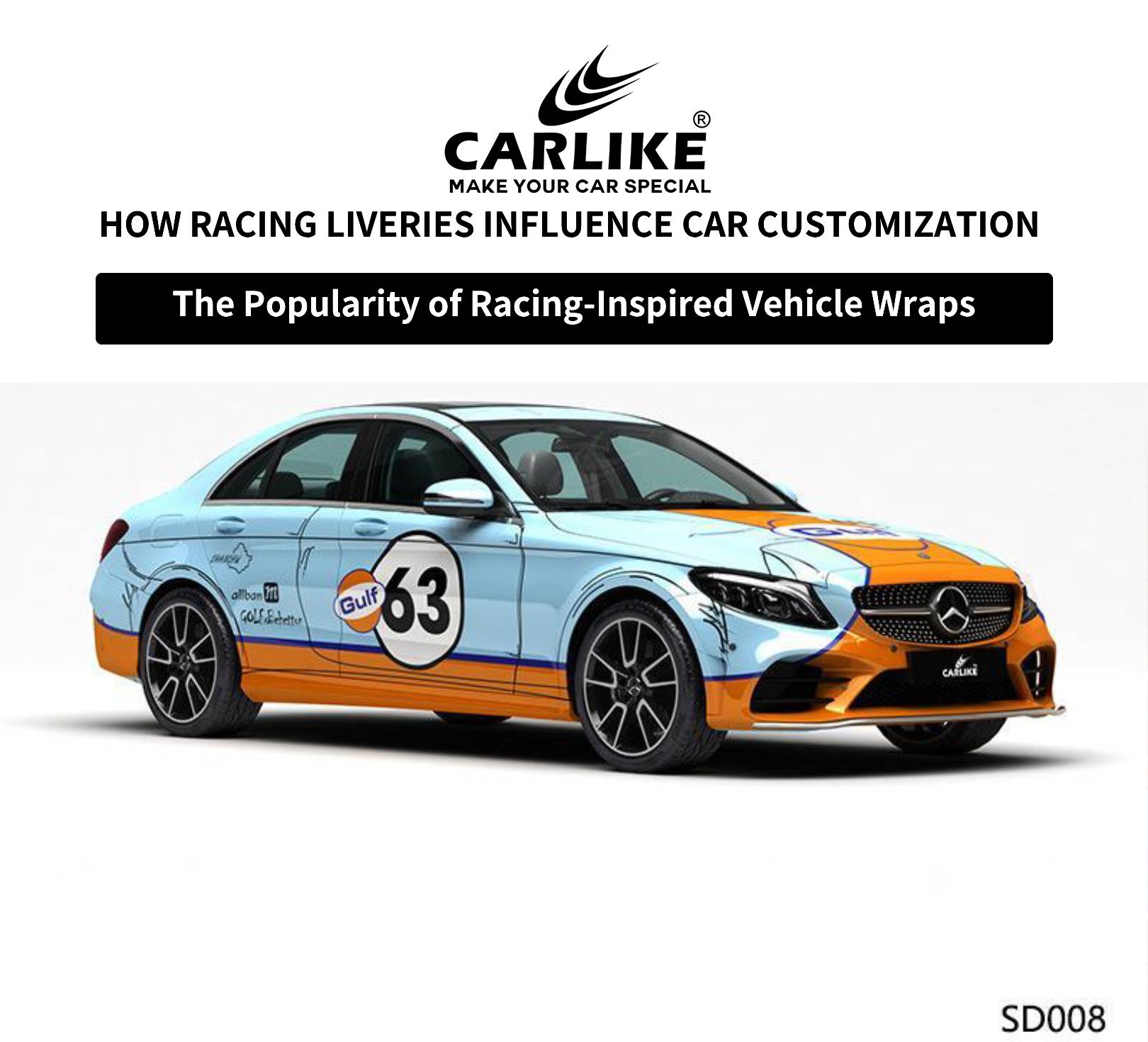Introduction
In the world of car customization, few elements hold as much sway as the iconic liveries seen on race tracks around the globe. These bold, eye-catching designs not only define the identity of racing teams but also inspire countless car enthusiasts to bring a piece of the racing spirit to their own vehicles. From the classic stripes of Martini Racing to the striking colors of Gulf Oil, the influence of these legendary racing liveries continues to shape and invigorate today's custom car scene, merging high-speed aesthetics with personal expression. This article explores how these timeless designs have transcended the track, becoming a driving force in automotive customization.
💡 Did you know
Racing liveries are the distinctive paint schemes and graphics applied to race cars, designed to showcase team identities, sponsors, and enhance visibility on the track. These liveries often feature bold colors, logos, and unique patterns, making them instantly recognizable and iconic. Over time, many racing liveries have become legendary, influencing car enthusiasts and customizers worldwide, who adopt these designs to bring a piece of racing heritage and style to their own vehicles.
Background on iconic racing liveries car
Background on Iconic Racing Liveries
Racing liveries, the distinct color schemes and designs adorning race cars, have been a crucial aspect of motorsport culture since the early days of competitive racing. These liveries do more than simply make cars look good; they serve as powerful symbols of identity, heritage, and sponsorship for racing teams. Over the decades, certain liveries have achieved iconic status, leaving an indelible mark on both the racing world and popular culture.
The Evolution of Racing Liveries
In the early 20th century, race cars were often painted in national colors to represent their countries in international competitions. For instance, British cars were painted green, French cars blue, Italian cars red, and German cars white (later silver). As the sport evolved, commercial sponsorship began to play a significant role, and the liveries became more elaborate and varied to reflect the brands supporting the teams.
Notable Iconic Liveries
- 1. Martini Racing: Known for its distinctive blue and red stripes over a white or silver base, the Martini Racing livery has adorned some of the most successful cars in motorsport history. This livery became synonymous with high performance and stylish design, especially in rallying and endurance racing.
- 2. Gulf Oil: The blue and orange Gulf Oil livery is perhaps one of the most recognizable in racing history. Made famous by the Ford GT40 and Porsche 917 in the 1960s and 70s, the Gulf colors symbolize endurance racing excellence and have become a favorite among car enthusiasts.
- 3. John Player Special (JPS): The black and gold livery of John Player Special, most famously seen on Lotus Formula 1 cars, exudes elegance and sophistication. This livery, prominent during the 1970s and 80s, is remembered for its association with legendary drivers like Ayrton Senna.
- 4. Red Bull Racing: More contemporary but equally iconic, the dark blue and yellow livery of Red Bull Racing has become a symbol of modern Formula 1 success. The bold design reflects the dynamic and youthful image of the brand.
Influence Beyond the Track
These liveries have transcended their racing origins to influence a wide range of industries, from fashion to toy design. In car customization, enthusiasts often recreate these iconic looks to capture a piece of racing history and bring a touch of the track to the street. The aesthetic appeal and historical significance of these liveries make them enduring favorites in the custom car community.
By understanding the rich heritage and cultural impact of these racing liveries, one can appreciate how they continue to inspire and shape the vibrant world of car customization today.
😍CARLIKE®launched in 2012, mainly focus on premium car wrapping vinyls, with rich colors and stylish designs. High performance with economic price is always the persuit of CARLIKE®.
CARLIKE-Make Your Car Special.
China Office:Guangzhou Sino Group Co., LTD
Address: No. 608-609 6F Mingfeng Building, Tonghe Road, Baiyun District, Guangzhou, China

How modern technology allows for intricate and detailed designs on Racing liveries
Digital Design and Visualization
- Advanced Design Software: Modern graphic design software such as Adobe Illustrator, CorelDRAW, and specialized vehicle wrap design tools allow designers to create highly detailed and precise liveries. These programs offer tools for creating complex patterns, gradients, and effects that were difficult or impossible to achieve manually.
- 3D Visualization: 3D modeling software enables designers to visualize how the livery will look on the actual vehicle. Programs like Autodesk's 3ds Max or Blender can render the design on a 3D model of the car, allowing for adjustments to be made before any physical work begins.
High-Resolution Printing
- Digital Printing Technology: Advancements in digital printing technology have revolutionized how liveries are applied to vehicles. High-resolution printers can produce detailed and vibrant graphics on large vinyl sheets. These printers can handle intricate designs with fine lines and gradients, maintaining clarity and quality.
- Custom Vinyl Wraps: Vinyl wraps have become a popular medium for applying racing liveries. Modern vinyl materials are durable, stretchable, and can conform to the contours of a car's body, allowing for seamless application of complex designs. Companies like 3M and Avery Dennison produce high-quality wraps that can withstand the rigors of racing environments.
CNC Cutting and Plotters
- Computer Numerical Control (CNC) Cutting: CNC cutting machines and plotters can precisely cut vinyl and other materials according to the design specifications. This ensures that even the most complex shapes and patterns are accurately produced, ready for application on the vehicle.
Laser Technology
- Laser Etching and Cutting: Laser technology allows for precise etching and cutting of materials used in liveries. This can be used to create detailed patterns and logos with high precision, adding another layer of complexity and customization to the designs.
Augmented Reality (AR)
- AR for Design Placement: Augmented Reality (AR) tools enable designers and customers to see how a livery will look on a car in real-time, superimposing the design onto a live image of the vehicle. This helps in visualizing the final product and making any necessary adjustments before application.
Advanced Materials
- Reflective and Metallic Inks: New types of inks and materials, such as reflective and metallic inks, add a unique flair to liveries. These materials can create effects that change with lighting conditions, making the design dynamic and visually striking.
- Durable Coatings: Modern coatings and finishes protect the intricate designs from the harsh conditions of racing, including UV rays, dirt, and debris. These coatings ensure that the liveries remain vibrant and intact over time.
Collaboration and Sharing Platforms
- Online Collaboration Tools: Cloud-based platforms and collaboration tools allow design teams to work together seamlessly, regardless of their physical location. Designers can share their work in real-time, gather feedback, and make improvements collaboratively.
In summary, modern technology has expanded the possibilities for racing liveries, enabling the creation of intricate, detailed, and durable designs that enhance the visual appeal and identity of racing vehicles.



